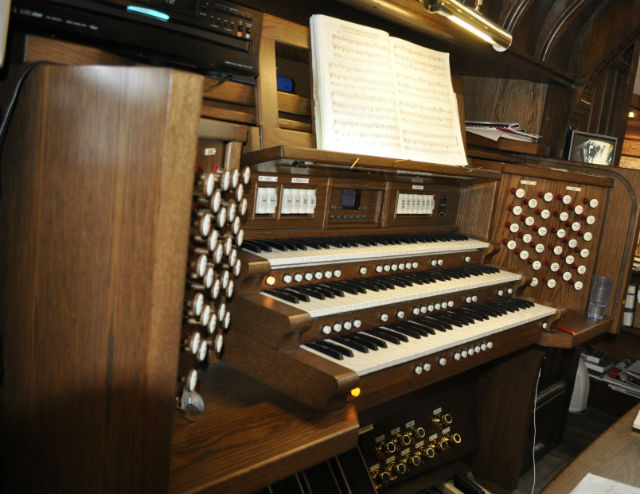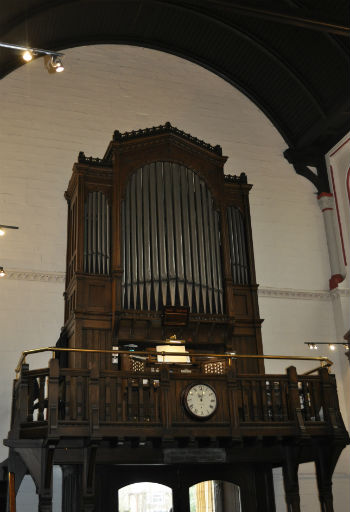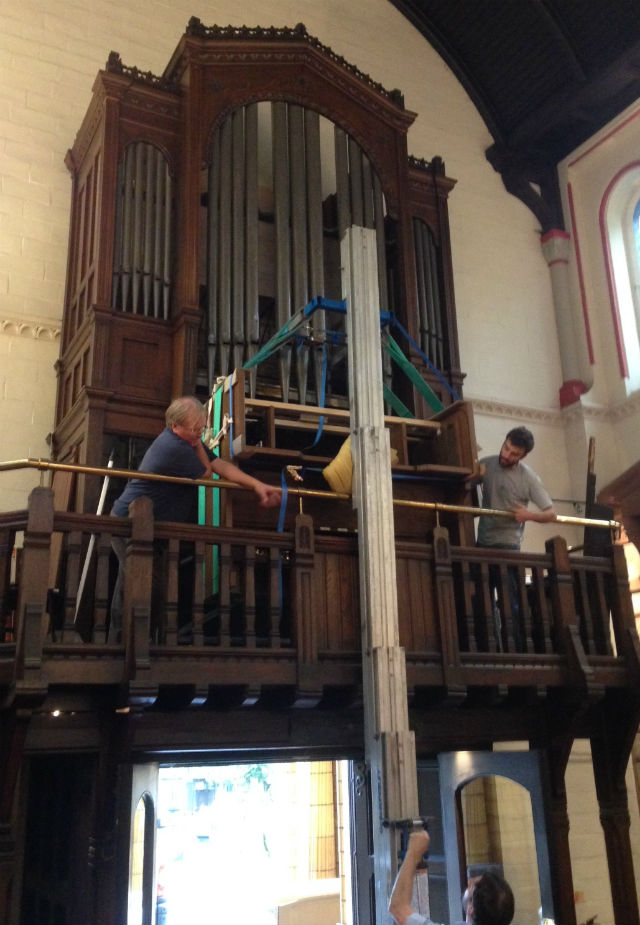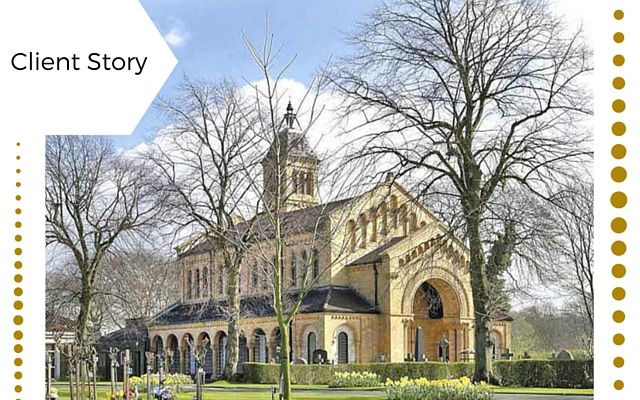The brief was to create an organ which was not just suitable for accompanying hymns but was capable of convincingly playing the repertoire alongside performances of orchestral music and popular songs. The Regent Classic Organ replaces an Allen instrument which, whilst still working well, was of limited resources and had come to the end of its warranty period (the cost of extending the warranty was considered too great to continue).
The design of the Digital Organ
The organ is a 3-manual drawstop instrument. However, rather than the conventional English construction of the Choir manual being the lowest, the organ places the Great manual as the lowest of the three, followed by the Swell and with the Solo at the top. However, the manuals can be rearranged into any order desired! The console is built into the existing organ case on its gallery at the liturgical west end of the chapel. The original pipe organ by Jardine was replaced by an electronic organ in the 70’s. The console woodwork matches the existing casework as you can see below.

The Great, Swell and Pedal departments are of a relative conventional specification. Notable features are a complete chorus of stopped flutes and a Dulciana stop on the Great, a 16’ string on the Swell and a very soft 16’ Salicional on the pedals which is far more suitable as an accompaniment to the softer string stops than a bourdon.
The voicing of the Organ

The voicing of these departments is eclectic but gives a huge flexibility. On the Great, the flutes are early English in tone and speech, the principal chorus is of a mild scale to aid the performance of polyphonic music but quite assertive in its clarity. The Duciana is a ‘bind-all’ stop which also blends well with the 8’ Unda Maris. The Trompette has a French edge whilst not being too loud for the chorus. The Swell flues are more English Victorian than those of the Great and bind well together with the Hautbois. The inclusion of the 1’ has proved very useful. The strings have a German edge whilst the big reeds lean towards France with a bit of William Hill! The pedal division is comprehensive and ranges hugely in dynamics from the whisper-like Salicional to the 16/32’ Bombardes.
It is on the solo division which we find the greatest variety of stops. Firstly, we have a complete chorus of ‘keen’ strings (16/8/4/2/cornet des violes) along with a family of harmonic flutes and a large five-rank Cornet. More unusually we have a family of ‘Tibia’ stops, as generally found on theatre organs. The Tibias also have their own tremulant, separate from that of the rest of the solo (all divisions have two independently assignable and adjustable tremulants). Also, in theatre organ style, we have a Kinura (a fractional length reed) which, when blended with the Tibias, gives a very familiar theatre organ timbre. Added to this we have a French Horn which, when tremulated, acts as a tuba horn as found on organs by Wurlitzer and others.
The playing experience of this instrument is wonderful. There are just so many colours which can be created. The combination of the strings and undulants on all departments is stunning and hugely effective, especially when all departments are placed under expression together. Alongside this, we have an instrument capable of creating a viable theatre organ which certainly comes in to its own when medleys of wartime music are requested.
A video demonstrating the Regent Classic Organ
Here is a video made by the Manchester Crematorium demonstrating the flexibility of the organ and how it fits with their requirements which are very different to a church for example:
Every installation has it’s challenges
And if ever you wondered how an organ gets from the ground floor into a loft it’s not magic but it does involve a piece of equipment called a genie lift. In essence this is a manual fork lift and as you can see in the picture below the organ is hung underneath the forks and is slowly lifted into the air. It then requires a couple of strong people in the loft to take delivery as the organ is slowly lowered back down to loft floor.

I have had a passion for church organs since the tender age of 12. I own and run Regent Classic Organs with a close attention to the detail that musicians appreciate; and a clear understanding of the benefits of digital technology and keeping to the traditional and emotional elements of organ playing.


